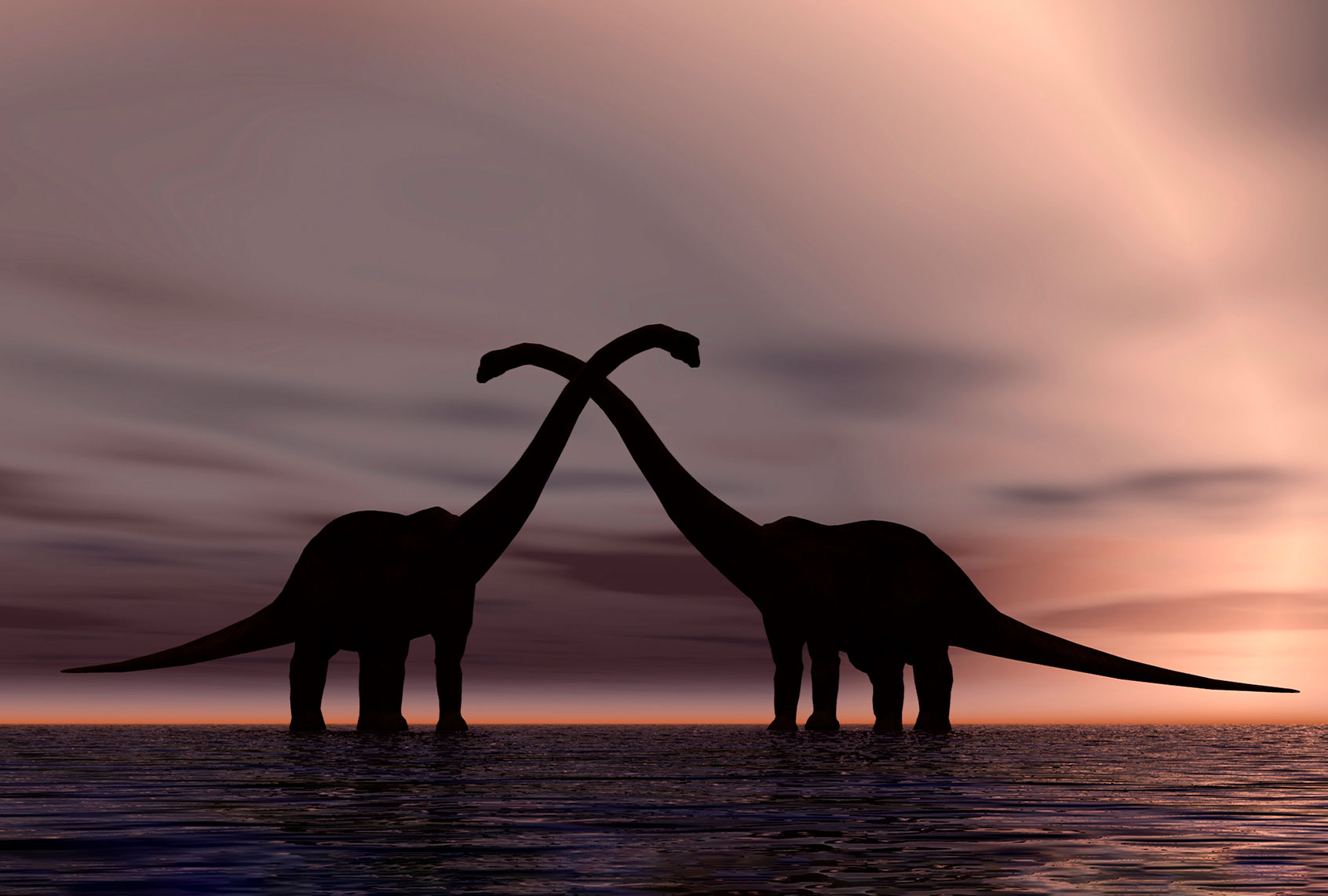Here’s an adorable, if wholly hypothetical, thought: two dinosaurs in love. Jim Henson’s anthropomorphic sitcom “Dinosaurs” comes to mind. But what exactly would dinosaur mating look like — in the real world, not on TV?
Obviously we will never know for sure what they did to woo each other, but science buffs did receive a clue about dinosaur mating mechanics earlier this year. In January scientists from the University of Bristol and the University of Massachusetts Amherst revealed in the journal Current Biology that they had found a dinosaur cloaca. Cloacas, for the uninitiated, are the equivalent of an anus, urethra and genitalia, found in animals like amphibians, birds and reptiles. This particular cloaca was discovered in a fossil that had preserved the skin patterns of a Psittacosaurus, a dinosaur related to the Triceratops that was roughly the size of a dog.
Salon reached out to two of the scientists behind that study to find out what we now know, more broadly, about dinosaur reproduction.
“In terms of dinosaurs we know that they had sex as all animals have unless they are hermaphrodites, which is not the norm amongst animal with a spine,” Dr. Jakob Vinther, a paleontologist at the University of Bristol, told Salon by email. “A bigger question is how!!” He noted that birds, which are descended from dinosaurs, often lack reproductive organs like a penis and “instead have cloacas that are virtually indistinguishable between the sexes and then rub them against each other while vibrating vigorously and thereby sperm is transferred. This is so elegantly called cloacal kissing.” This is in contrast to copulatory sex, in which a male introduces sperm directly into the female’s body.
Want more health and science stories in your inbox? Subscribe to Salon’s weekly newsletter The Vulgar Scientist.
“We could tell that the cloaca had an anatomy that is suited for copulatory sex rather than cloacal kissing,” Vinther told Salon regarding the fossilized cloaca. “So far so good, but we can’t tell its sex based on the external anatomy. The penis is elegantly tucked away inside the cloaca.”
Dr. Diane Kelly, a professor of psychological and brain sciences at the University of Massachusetts Amherst who helped co-author the dinosaur cloaca paper, elaborated on what we do know for sure about dinosaur sex — and what we don’t.
“Our study of the fossilized cloaca let us make some inferences about possible Psittacoasaur social signals, which may or may not have been sexual,” said Kelly. “We just don’t know!”
What Kelly can say for sure is that dinosaurs used internal fertilization.
“We have widespread examples of dinosaur species that laid shelled eggs — the shell is laid down inside the female reproductive tract, so fertilization also had to happen there,” Kelly explained. “There are no examples of fossilized dinosaur genitalia, but we can make some guesses about how those bits would have worked by looking at the anatomy of dinosaurs’ closest living relatives.”
Kelly said that because crocodilians and birds like ostriches and emus have sex in which males can insert their penises and turn them inside out (meaning they are eversible), “It’s a reasonable guess that dinosaurs did that as well.”
And some answers only lead to more questions.
“Sure, they had copulatory sex, but how did a diplodocus mount another?” Vinther asked. “Could they do that at all and did they instead stand side by side and then the male had a very long and dextrous penis that could find its way? Barnacles are crustaceans, which are attached and still have copulatory sex. How do you find the most optimal mate then? Well, you have a penis that is 10-15 times longer than yourself and then you grope around until another barnacle lets you in.”
He expressed doubt as to whether dinosaurs did that, noting that “apart from in dolphins and whales, the penis in animals with a spine is typically a turgid organ or it has erectile tissues that make an organ with limited ability to feel its way without some assistance.”
Alas, according to Kelly, everything else about the mating process — including any speculative dinosaur romance — remains pretty much a mystery.
“Mating behaviors don’t fossilize,” said Kelly. “So we don’t know anything at all about dinosaur courtship.”


